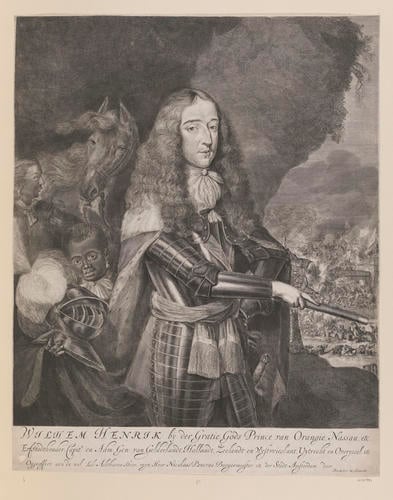-
1 of 253523 objects
WILHEM HENRICK be der Gratie Gods Prince van Orangie c.1670-89
Engraving | 54.4 x 43.7 cm (sheet of paper) | RCIN 602991
-
Engraving of William III as Prince of Orange. Three quarter length with wig, lace cravat, armour, sash and ermine mantle. Standing with baton in right hand, attended by a Black page carrying a helmet and another figure with a horse. In the background right, a view of a battle can be seen in the distance. With Dutch inscription below. Borders trimmed. Not in O'Donoghue.
Although the inclusion of Black figures as servants, attendants, or enslaved people in portraits of European sitters was a common visual trope in the 17th and 18th centuries, the figure in this print shows a Black assistant known to have been with the young William III from 1659 (see Slavery, exh cat., Rijksmuseum, Amsterdam, 2021, p. 138). Even when the identity of a specific person is recorded, in visual material the submissive presence of such figures (often shown in acts of service such as holding clothes, umbrellas or trays) was typically deployed as a visual status symbol. The Black figures often emphasise the status of the main sitter by being positioned behind or looking up to them, establishing a physical as well as a racial hierarchy. Their presence also asserts the global power of the sitter through reference to the transatlantic slave trade. These figures are often dressed in clothing considered to be 'exotic' by contemporary Europeans such as turbans, silks, and caftans, further representing the luxurious fantasy and wealth that was felt to be embodied by the Black presence.
-
Creator(s)
-
Medium and techniques
Engraving
Measurements
54.4 x 43.7 cm (sheet of paper)
48.9 x 43.3 cm (image)
Category
Object type(s)
